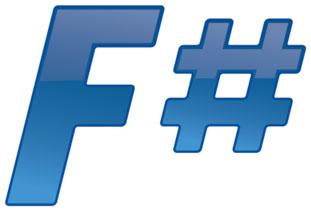 For yet another month, Java, C, and C++ dominated the top three slots of the monthly TIOBE programming-language rankings. That’s no surprise; once programming languages reach a certain level of adoption, they’re hard to budge, at least in the short term. The more radical movements occur further down the TIOBE list, where adoption by relatively few developers and companies may considerably sway a language’s rank. With that in mind, it’s notable that Julia, a high-level programming language built expressly for use in technical computing, has entered TIOBE’s list at 47th. “[Julia] combines functional programming paradigms with high speed,” read the firm’s note accompanying the rankings. “In other words, readable and stable code that performs. Chances are high that Julia will gain even more popularity the next few months.” Julia’s features include distributed parallel execution, an evolved compiler, and an “extensive mathematical function library,” in the words of its Website (which is a must-read for anyone interested in exploring the language). Its Base Library also features C and Fortran libraries for linear algebra, string processing, and other functions that give the language more mathematical strength. The Website features a performance comparison chart for Julia and other programming languages; benchmark times are relative to C, and Julia manages to more than hold its own against Python, R, Matlab, and Java in a number of code operations, including random number generation and numerical loops. Earlier this year, eFinancialCareers conducted an interview with Viral Shah, co-founder of Julia Computing, about the evolution of the language. A computational scientist by training, Shah discussed how Julia was meant to solve a particularly vexing issue: “Much of our progress in parallel computing was thwarted by the fact that while the users are programming in a high-level language such as R and Python, the performance-critical parts have to be rewritten in C/C++.” That two-language structure is, of course, highly inefficient. In industries that prize efficiency, such as finance, Julia has enjoyed rapid adoption by tech professionals and data scientists. (In banking and trading, algorithmic traders and quants now rely on Julia because it allows them to push code as quickly as possible to market, without needing to rewrite.) If the language continues to gain traction, it could move further up the TIOBE rankings—something to watch in coming months and years.
For yet another month, Java, C, and C++ dominated the top three slots of the monthly TIOBE programming-language rankings. That’s no surprise; once programming languages reach a certain level of adoption, they’re hard to budge, at least in the short term. The more radical movements occur further down the TIOBE list, where adoption by relatively few developers and companies may considerably sway a language’s rank. With that in mind, it’s notable that Julia, a high-level programming language built expressly for use in technical computing, has entered TIOBE’s list at 47th. “[Julia] combines functional programming paradigms with high speed,” read the firm’s note accompanying the rankings. “In other words, readable and stable code that performs. Chances are high that Julia will gain even more popularity the next few months.” Julia’s features include distributed parallel execution, an evolved compiler, and an “extensive mathematical function library,” in the words of its Website (which is a must-read for anyone interested in exploring the language). Its Base Library also features C and Fortran libraries for linear algebra, string processing, and other functions that give the language more mathematical strength. The Website features a performance comparison chart for Julia and other programming languages; benchmark times are relative to C, and Julia manages to more than hold its own against Python, R, Matlab, and Java in a number of code operations, including random number generation and numerical loops. Earlier this year, eFinancialCareers conducted an interview with Viral Shah, co-founder of Julia Computing, about the evolution of the language. A computational scientist by training, Shah discussed how Julia was meant to solve a particularly vexing issue: “Much of our progress in parallel computing was thwarted by the fact that while the users are programming in a high-level language such as R and Python, the performance-critical parts have to be rewritten in C/C++.” That two-language structure is, of course, highly inefficient. In industries that prize efficiency, such as finance, Julia has enjoyed rapid adoption by tech professionals and data scientists. (In banking and trading, algorithmic traders and quants now rely on Julia because it allows them to push code as quickly as possible to market, without needing to rewrite.) If the language continues to gain traction, it could move further up the TIOBE rankings—something to watch in coming months and years. Julia Gains Popularity on TIOBE Language List
 For yet another month, Java, C, and C++ dominated the top three slots of the monthly TIOBE programming-language rankings. That’s no surprise; once programming languages reach a certain level of adoption, they’re hard to budge, at least in the short term. The more radical movements occur further down the TIOBE list, where adoption by relatively few developers and companies may considerably sway a language’s rank. With that in mind, it’s notable that Julia, a high-level programming language built expressly for use in technical computing, has entered TIOBE’s list at 47th. “[Julia] combines functional programming paradigms with high speed,” read the firm’s note accompanying the rankings. “In other words, readable and stable code that performs. Chances are high that Julia will gain even more popularity the next few months.” Julia’s features include distributed parallel execution, an evolved compiler, and an “extensive mathematical function library,” in the words of its Website (which is a must-read for anyone interested in exploring the language). Its Base Library also features C and Fortran libraries for linear algebra, string processing, and other functions that give the language more mathematical strength. The Website features a performance comparison chart for Julia and other programming languages; benchmark times are relative to C, and Julia manages to more than hold its own against Python, R, Matlab, and Java in a number of code operations, including random number generation and numerical loops. Earlier this year, eFinancialCareers conducted an interview with Viral Shah, co-founder of Julia Computing, about the evolution of the language. A computational scientist by training, Shah discussed how Julia was meant to solve a particularly vexing issue: “Much of our progress in parallel computing was thwarted by the fact that while the users are programming in a high-level language such as R and Python, the performance-critical parts have to be rewritten in C/C++.” That two-language structure is, of course, highly inefficient. In industries that prize efficiency, such as finance, Julia has enjoyed rapid adoption by tech professionals and data scientists. (In banking and trading, algorithmic traders and quants now rely on Julia because it allows them to push code as quickly as possible to market, without needing to rewrite.) If the language continues to gain traction, it could move further up the TIOBE rankings—something to watch in coming months and years.
For yet another month, Java, C, and C++ dominated the top three slots of the monthly TIOBE programming-language rankings. That’s no surprise; once programming languages reach a certain level of adoption, they’re hard to budge, at least in the short term. The more radical movements occur further down the TIOBE list, where adoption by relatively few developers and companies may considerably sway a language’s rank. With that in mind, it’s notable that Julia, a high-level programming language built expressly for use in technical computing, has entered TIOBE’s list at 47th. “[Julia] combines functional programming paradigms with high speed,” read the firm’s note accompanying the rankings. “In other words, readable and stable code that performs. Chances are high that Julia will gain even more popularity the next few months.” Julia’s features include distributed parallel execution, an evolved compiler, and an “extensive mathematical function library,” in the words of its Website (which is a must-read for anyone interested in exploring the language). Its Base Library also features C and Fortran libraries for linear algebra, string processing, and other functions that give the language more mathematical strength. The Website features a performance comparison chart for Julia and other programming languages; benchmark times are relative to C, and Julia manages to more than hold its own against Python, R, Matlab, and Java in a number of code operations, including random number generation and numerical loops. Earlier this year, eFinancialCareers conducted an interview with Viral Shah, co-founder of Julia Computing, about the evolution of the language. A computational scientist by training, Shah discussed how Julia was meant to solve a particularly vexing issue: “Much of our progress in parallel computing was thwarted by the fact that while the users are programming in a high-level language such as R and Python, the performance-critical parts have to be rewritten in C/C++.” That two-language structure is, of course, highly inefficient. In industries that prize efficiency, such as finance, Julia has enjoyed rapid adoption by tech professionals and data scientists. (In banking and trading, algorithmic traders and quants now rely on Julia because it allows them to push code as quickly as possible to market, without needing to rewrite.) If the language continues to gain traction, it could move further up the TIOBE rankings—something to watch in coming months and years. 


